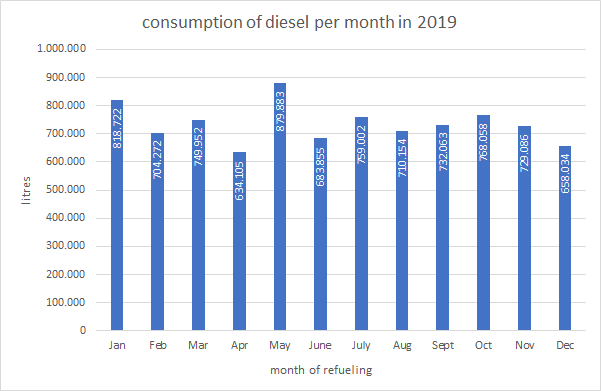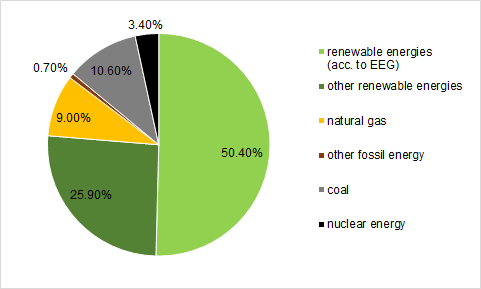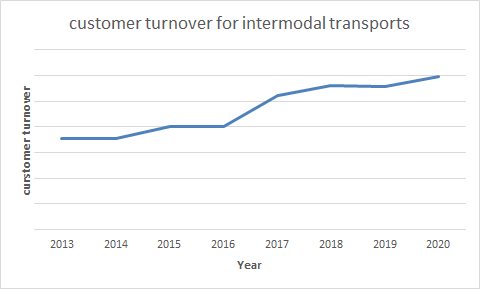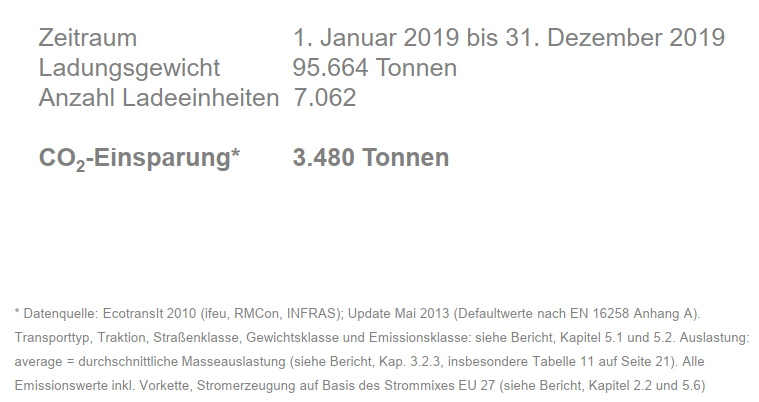Key Performance Indicator GRI SRS-301-1: Materials used
The reporting organization shall report the following information:
a. Total weight or volume of materials that are used to produce and package the organization’s primary products and services during the reporting period, by:
i. non-renewable materials used;
ii. renewable materials used.
Key Performance Indicator GRI SRS-302-1: Energy consumption
The reporting organization shall report the following information:
a. Total fuel consumption within the organization from non-renewable sources, in joules or multiples, and including fuel types used.
b. Total fuel consumption within the organization from renewable sources, in joules or multiples, and including fuel types used.
c. In joules, watt-hours or multiples, the total:
i. electricity consumption
ii. heating consumption
iii. cooling consumption
iv. steam consumption
d. In joules, watt-hours or multiples, the total:
i. electricity sold
ii. heating sold
iii. cooling sold
iv. steam sold
e. Total energy consumption within the organization, in joules or multiples.
f. Standards, methodologies, assumptions, and/or calculation tools used.
g. Source of the conversion factors used.
Diesel consumption 2019
In 2019, the diesel consumption of Anhalt’s entire fleet was 8,827,186 liters from non-renewable sources.

Petrol consumption 2019
In 2018, the petrol consumption was 8,644 liters.
b) Not applicable
Bargen: 354,888 kW/h
Duisburg: 212,732 kW/h

We hired a service provider to procure our energy supply contracts. This service provider minds the European climate protection goals and the promotion of the energy transition. Every kilowatt-hour from renewable energy sources protects the environment. A sustainable energy efficiency is our mission. Already more than 50.4% of our power consumption stems from renewable energies.
ii) Gas consumption 2019
Bargen: 61.879 kW/h
Duisburg: 274.167 kW/h
iii) There is no cooling of products on our sites.
iv) Steam consumption is not considered separately.
d) i), ii), iii), iv)
Electricity, heating energy, cooling energy or steam is not subject to sale.
e) We evaluate the fleet consumption and the total energy consumption within the organisation in liters and kilowatt hours.
f) Not specified; diesel consumption is evaluated in liters.
g) Sources are not available since no conversion factors are used. Please see the example of an evaluation of a tractor unit's diesel consumption.

Key Performance Indicator GRI SRS-302-4: Reduction of energy consumption
The reporting organization shall report the following information:
a. Amount of reductions in energy consumption achieved as a direct result of conservation and efficiency initiatives, in joules or multiples.
b. Types of energy included in the reductions; whether fuel, electricity, heating, cooling, steam, or all.
c. Basis for calculating reductions in energy consumption, such as base year or baseline, including the rationale for choosing it.
d. Standards, methodologies, assumptions, and/or calculation tools used.

(customer turnover fpr intermodal transports at Anhalt Logistics GmbH & Co. KG from 2013 onwards)
We were able to save 3,480 tons in CO2 emissions in 2019 (only transport with combined transport).

b) The above-mentioned aim is to save CO2 emissions. We were able to reduce our vehicle fleet's diesel consumption per 100 km from 28.8 liters in 2018 to 28.4 liters in 2019.
Objective: We will reduce the fleet's fuel consumption by another 0.10 liters from 2019 to 2020.
Energy audit
In the period from 28.5.2019 (kick-off meeting) to 2.12.2019 (final meeting) an energy audit according to DIN EN 16247-1 was conducted.
The following measures have already been carried out:
a) Replacement of specular louvre luminaires with a system consumption of about 130 Watt with new energy-saving LED lighting with a system consumption of 35 Watt.
b) The conference and office rooms newly installed at the Bargen headquarters were equipped with energy-efficient LED lighting.
c) In one corridor area, lighting control via a presence detector was introduced.
d) The truck workshop was equipped with a natural gas-powered dark radiant heater.
The energy auditor made the following recommendations:
Increase the share of intermodal transports
- Cooperation with tractor manufacturers to increase the energy efficiency of the vehicles used
- Further expansion of the driver-related evaluation of the transports carried out and the energy efficiency analysis
Key Performance Indicator GRI SRS-303-3: Water withdrawal
The reporting organization shall report the following information:
a. Total water withdrawal from all areas in megaliters, and a breakdown of this total by the following sources, if applicable:
i. Surface water;
ii. Groundwater;
iii. Seawater;
iv. Produced water;
v. Third-party water.
b. Total water withdrawal from all areas with water stress in megaliters, and a breakdown of this total by the following sources, if applicable:
i. Surface water;
ii. Groundwater;
iii. Seawater;
iv. Produced water;
v. Third-party water, and a breakdown of this total by the withdrawal sources listed in i-iv.
c. A breakdown of total water withdrawal from each of the sources listed in Disclosures 303-3-a and 303-3-b in megaliters by the following categories:
i. Freshwater (≤1,000 mg/L Total Dissolved Solids);
ii. Other water (>1,000 mg/L Total Dissolved Solids).
d. Any contextual information necessary to understand how the data have been compiled, such as any standards, methodologies, and assumptions used.
Water consumption 2019
Bargen: 8,477 m³
Through our biological treatment plant in Bargen, we were able to directly discharge 5,599 liters of water. This quantity of water did not have to be discharged into the public sewage system.
Water consumption 2019
Duisburg: 10,196 m³
i) to v)
Unfortunately, we cannot provide any information about these parameters, since they are not applicable in our case.
b) i) to v)
Unfortunately, we cannot provide any information about these parameters, since they are not applicable in our case.
c) and d)
Unfortunately, we cannot provide any information about these parameters, since they are not applicable in our case.
Key Performance Indicator GRI SRS-306-3: Waste generated
The reporting organization shall report the following information:
a. Total weight of waste generated in metric tons, and a breakdown of this total by composition of
the waste.
b. Contextual information necessary to understand the data and how the data has been compiled.
As we trust professionals with the disposal routes, we can only provide information on the disposal quantity, so far as this is known.
- 9 t non-chlorinated machine and gear oil. Gear and lubricating oil (130,205) have been disposed of properly in 2019.
- 133 t flotation sludge (190,814) ans 36.6 t flotation sludge (070699) has been disposed of properly in 2019.
- 2.32 t oil-polluted equipment (150,202) has been disposed of properly in 2019.
- 0.44 t of solvents and mixture of solvents have been disposed of properly in 2019.
- 31.2 kg of laboratory chemicals (160,506) from our own wastewater treatment plants were returned to the producer for recycling.
Duisburg
- Paper, cardboard, and paperboard are collected and picked up weekly in 1,100-liter containers. Quantities are not recorded.
- Lightweight packaging is collected and picked up weekly in 1,100-liter containers.
- Mixed commercial waste is picked up biweekly in Duisburg in 5,000-liter containers for pretreatment (acc. to § 4 GewAbV) – the exact quantity is not determined.
Bargen
- Paper, cardboard, and paperboard are collected and picked up in 1,100-liter containers when needed. The quantities are not recorded. One 240-liter container is emptied every week.
- Paper meant for document destruction is collected in 1,100-liter containers and is picked on when needed.
- Lightweight packaging is collected and picked up weekly in 1,100-liter containers.
- Mixed commercial waste is picked up every 4 days in 1,100-liter containers for pretreatment (acc. to § 4 GewAbV) – the exact quantity is not determined.
- Furthermore, 8.7 t of paper and cardboard were brought away for the purpose of reuse in 2019 in Bargen.
- 13.3 t of wood waste (170,201) was disposed of by the disposal service provider.
- 2.35 t of documents were shredded in 2019.
c) The disposal service provider decides on the disposal method.